MSL Curiosity Research
After Curiosity successfully landed, tested the functionality of its instruments and devices, it was time for work. The first studies were conducted in test mode. The first of these tests was checking the laser and chemical spectral analyzer Chem Cam.
In order to determine the functionality of the Chem Cam, the first Martian target named “Stone No. 165” was chosen.
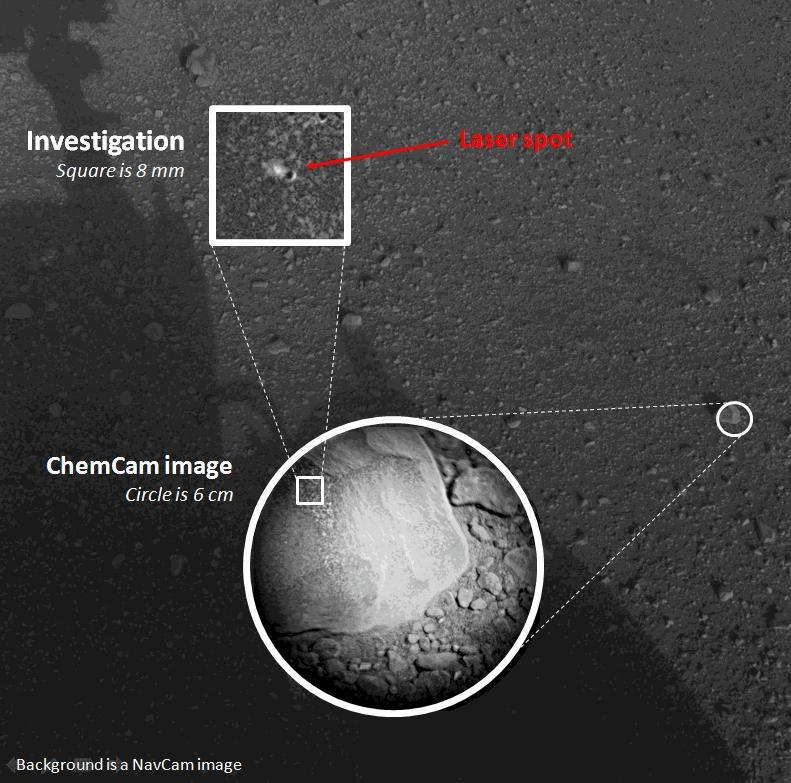
Then it was renamed Coronation and the results of the study were published under this name.
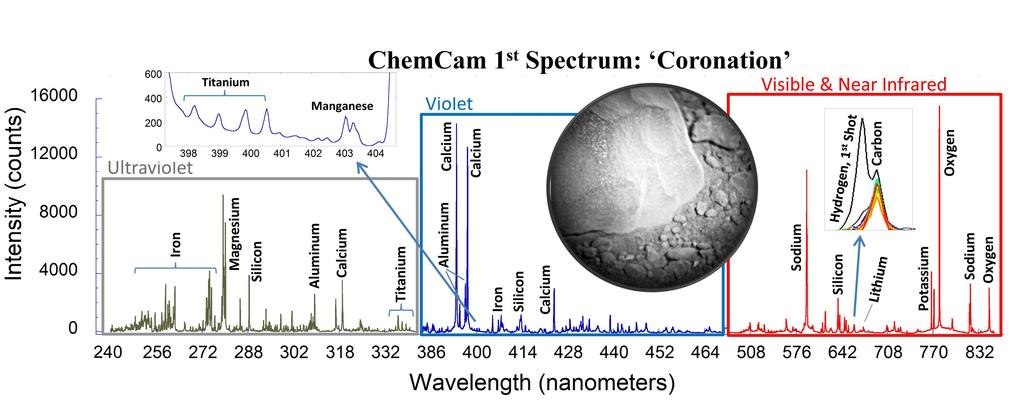
Without moving, Curiosity tested the Russian DAN device, assessing the hydrogen content in the soil beneath.
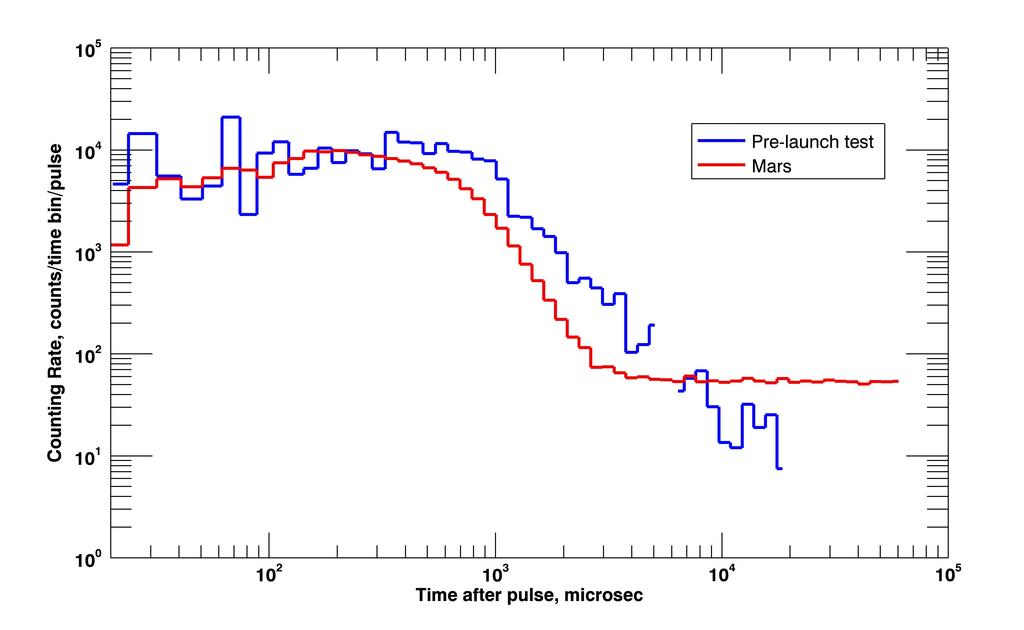
')
Then checked the climatic sensors REMS
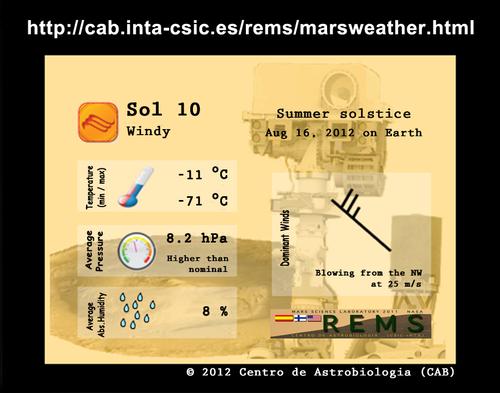
Chem Cam fired a series of shots at a section of ground that was exposed from the impact of the jet stream of the Sky Crane landing. As it became known later, this place was named Goulburn.
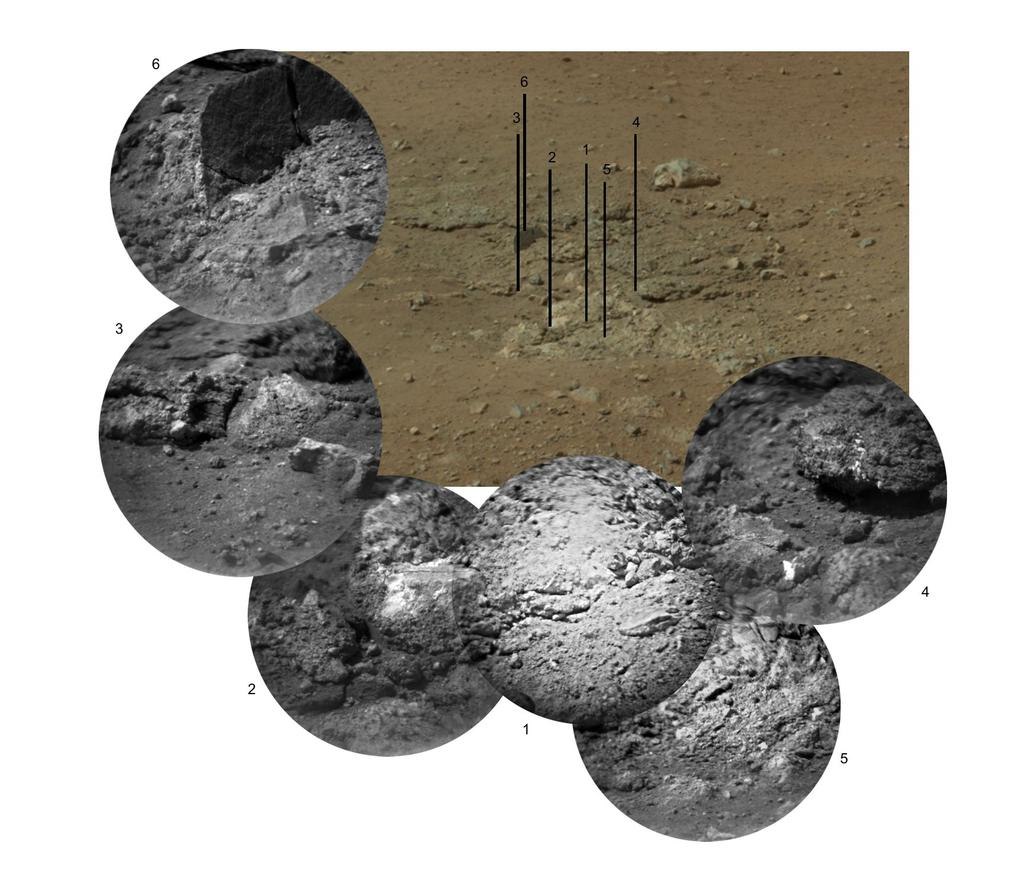
But the results of its NASA did not bother to tell.
After the first demonstration studies, MSL operators no longer indulge Internet users with detailed gifts. Even when another device was tested - the APXS scientists limited themselves to commenting that during the test “very precise peaks were obtained, as in tests under ideal conditions”.
Therefore, it remained only to follow the photo shoots regularly sent from Mars, and to assume that this time NASA was interested in a particular sample, to which Curiosity paid increased attention.
Thus, it was observed that the rover was eyeing a crack in the ground.
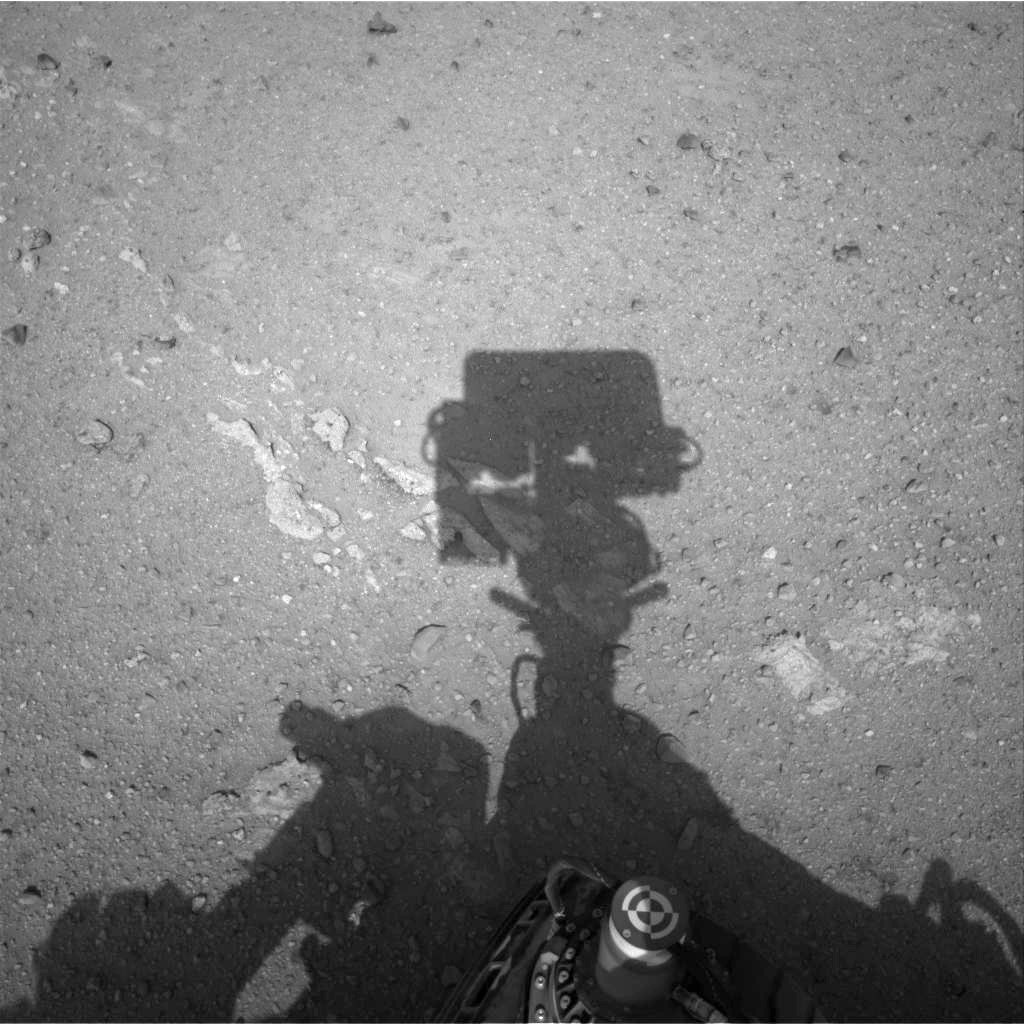
Later it became known that this place was called Link. It has become one of the three locations of rounded pebbles, and evidence of the activity of water on the surface of Mars.

The Hottah site also seemed interesting not only to NASA, but also to simple Internet users. True to people far from science, and with a good imagination, this place seemed to be evidence of the existence of graboids on Mars — underground monsters from the series “The Trembling of the Earth”.

Indeed, it seems as though something jumped out of the ground, and did not fall into it from the sky. Then NASA still explained that this is a trail of a meteorite fall.
The sites of Goulburn, Link and Hottah were later made public as evidence of a previously existing creek that rolled pebbles in a way that no other process known to science could have done.
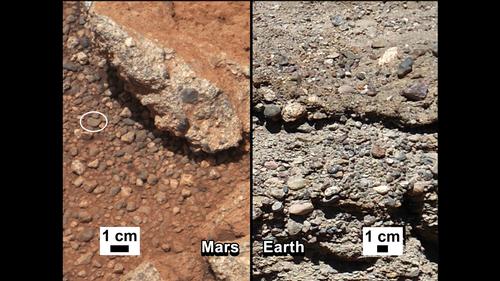
True, no trace of the channel of the stream itself was visible either from the surface or from space, therefore NASA did not rule out the possibility that all these pebbles were brought from somewhere by mountains by a mud flow
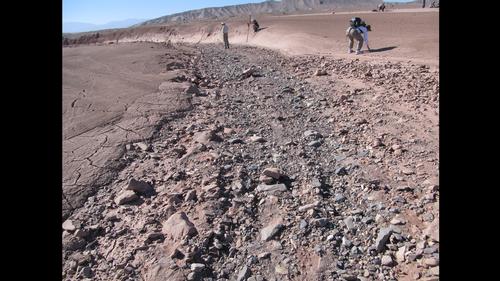
But all the media ignored such subtleties, having pleased the world with headlines: “ Curiosity found a stream ”
The following find has excited many.
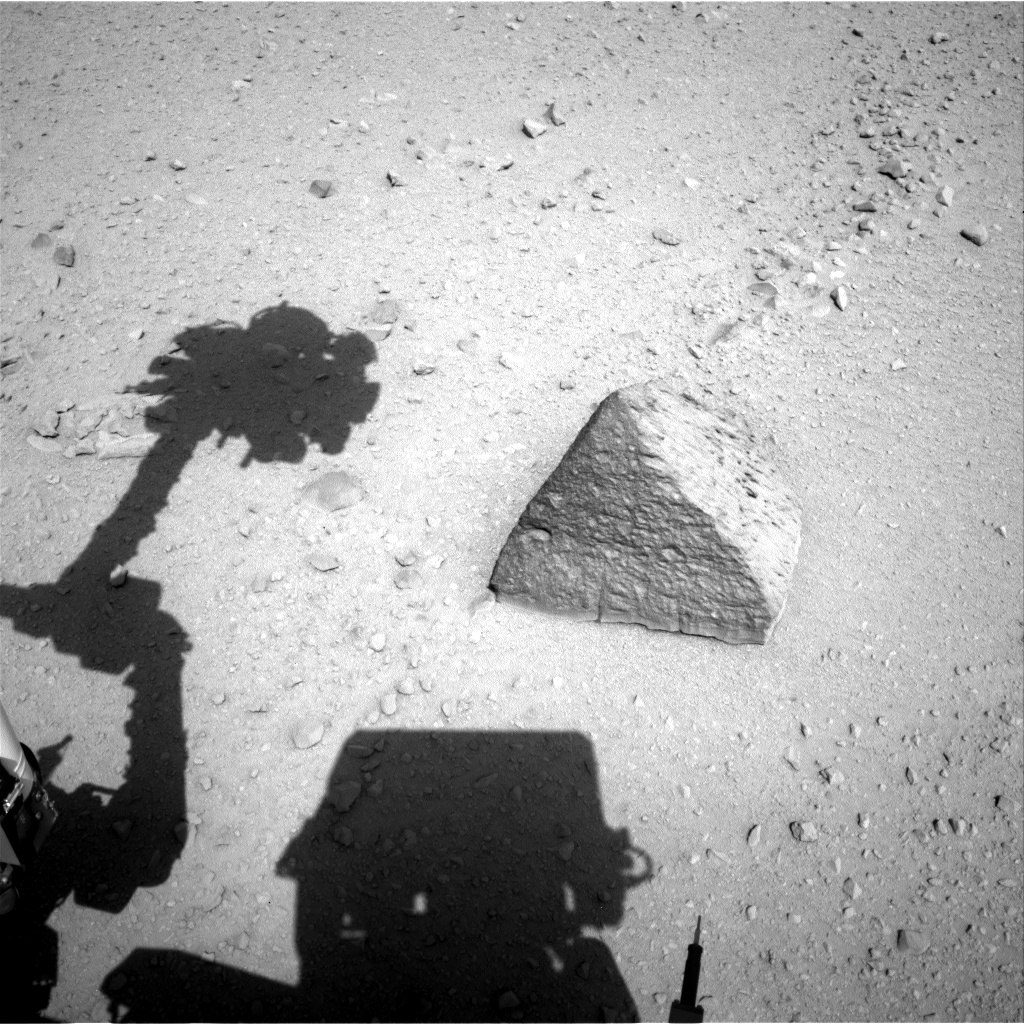
The first shots transmitted by Curiosity showed a pyramidal stone. Surprise caused and unusually straight lines of its faces, and the right angle observed at the base, and the observation that the stone simply lies on the ground, as if it was specially placed in the path of the rover. Particularly impressionable immediately spotted on its faces hieroglyphs and hollowed out "eyes".

Contrary to the stereotype "NASA hides", experts have detained the rover at the stone for three days. During this time, Mast Cam cameras filmed it in great detail.

And for the first time the camera on the MAHLI manipulator was tested in practical work.
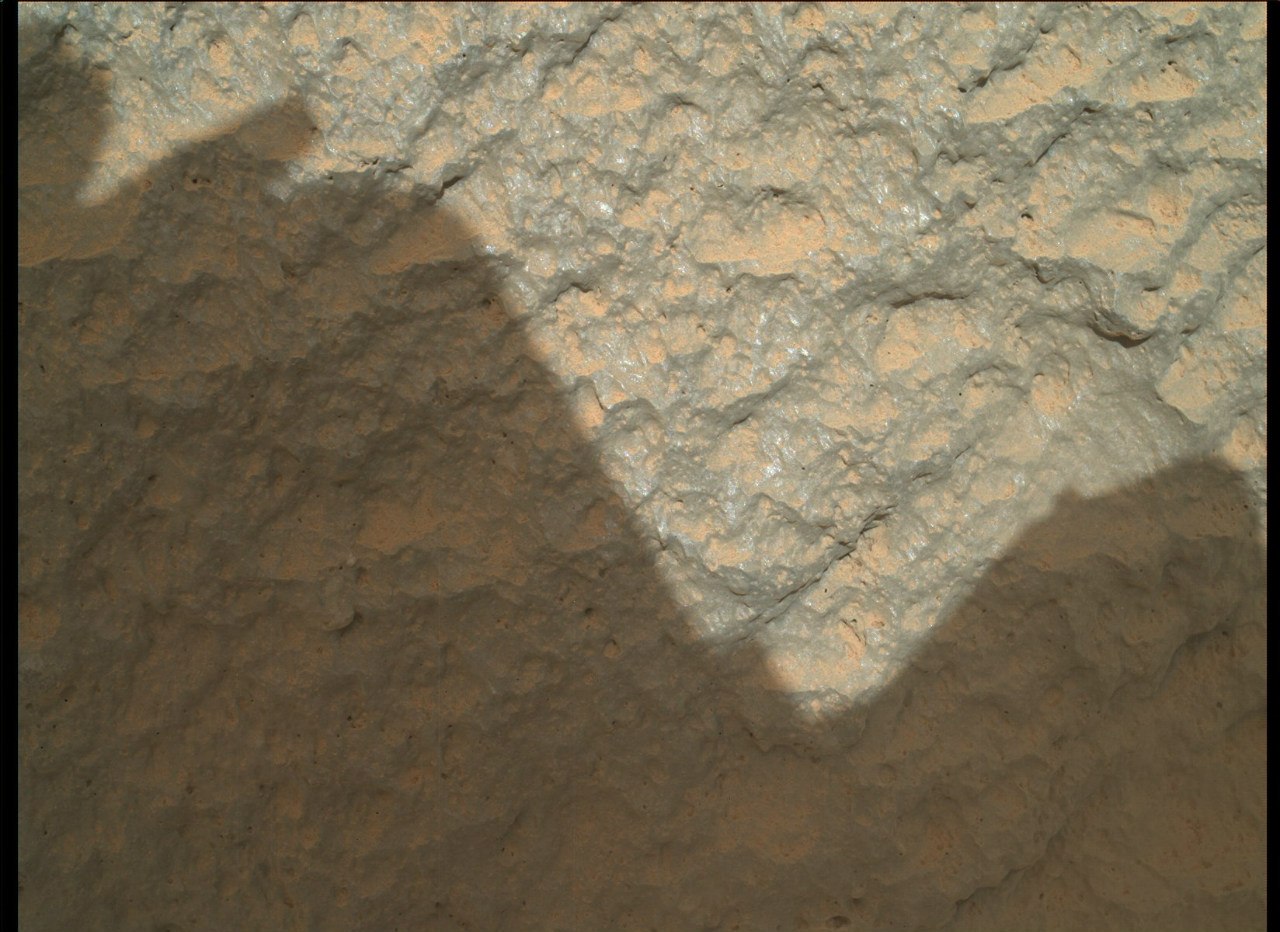
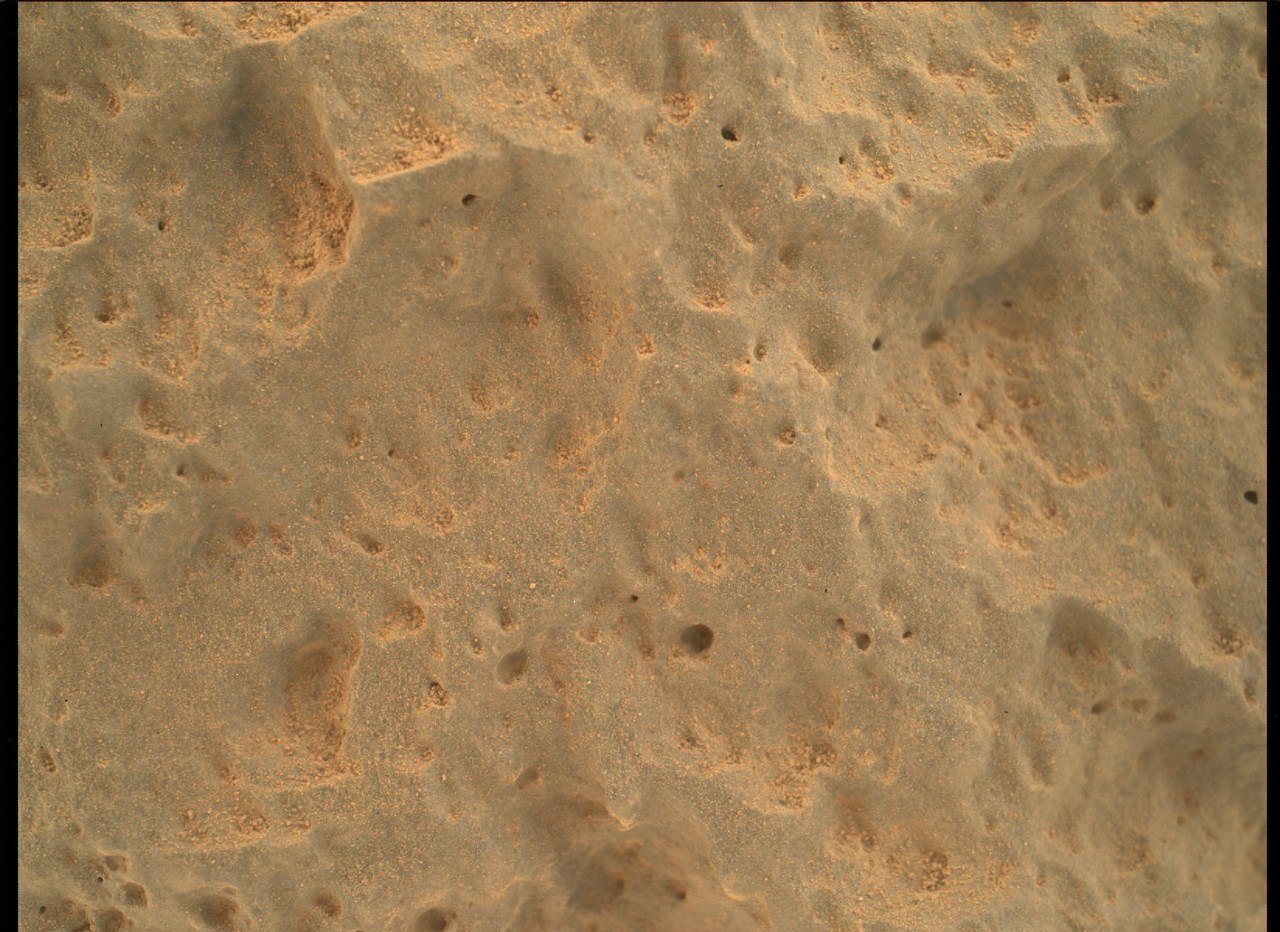
The chemical composition of the stone, named in memory of one of NASA engineers Jake Matijevic, was investigated using a Chem Cam laser and irradiated with alpha rays from an APXS instrument (Alpha-Particle X-ray Spectrometer). Due to the double research, it was possible to assess the quality of the analysis of each of the instruments, but NASA modestly kept the results with them.
But even the photos destroyed any hopes for the man-made stone shape,
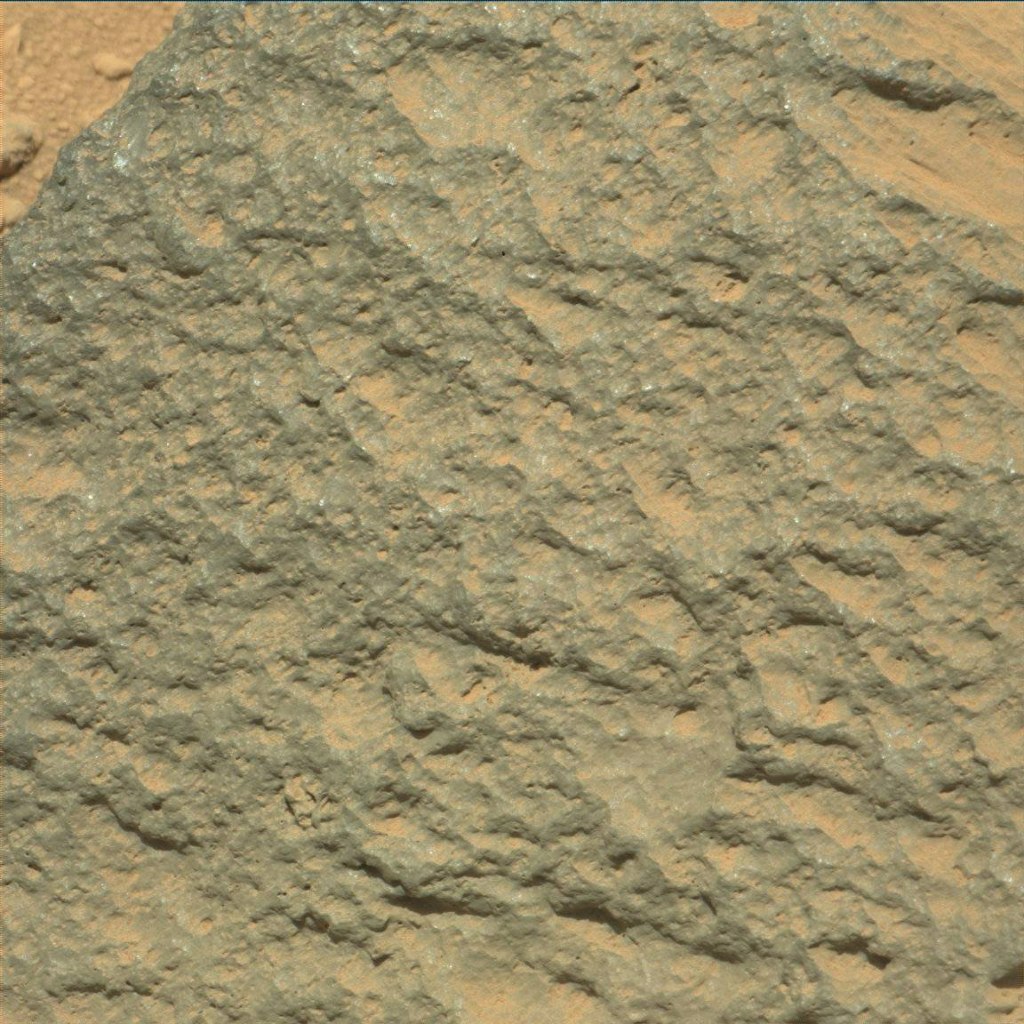
A published map of the Curiosity route showed that the rover was deliberately moving towards it for two days from 41 to 43 salt, which explains the “unexpectedness” of the appearance of a stone right on the way.

Finally, after delays and more than four hundred meters traveled, the rover approached the previously announced goal - the Glenelg point.
Here he made a detailed panorama of the area

The full panorama format is here.
and his attention was attracted by a noticeable outcrop of stones
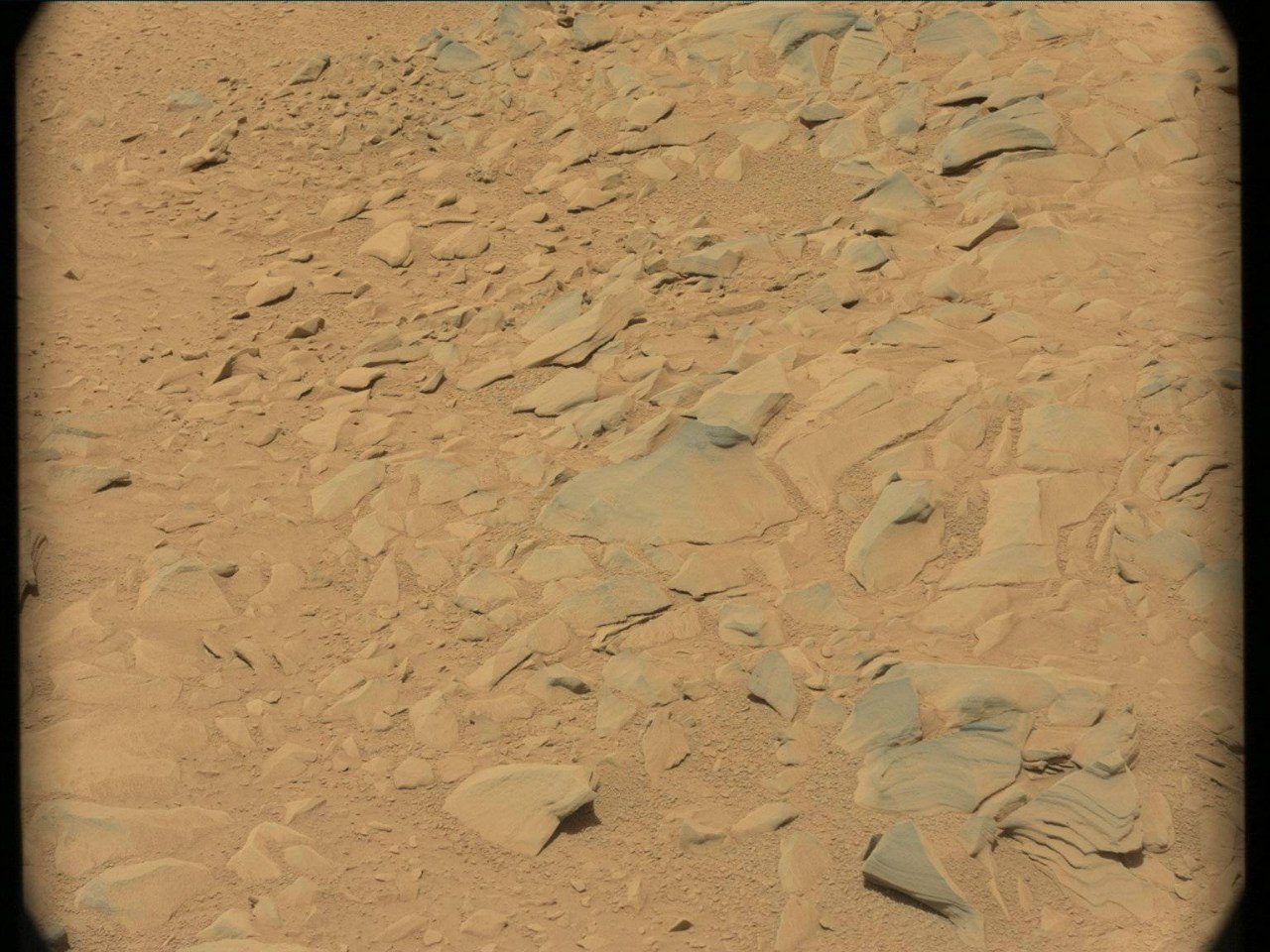
Of these, one target was chosen, called Bathurst Inlet (with the exception of nominal names like Bradbury Landing and Jake Matijevic, NASA borrows names from Canadian toponymy).

She was also closely examined by the MAHLI camera,

The bare side of the stone suggests that Curiosity used a DRT device, which consists of two brushes on the rotor.
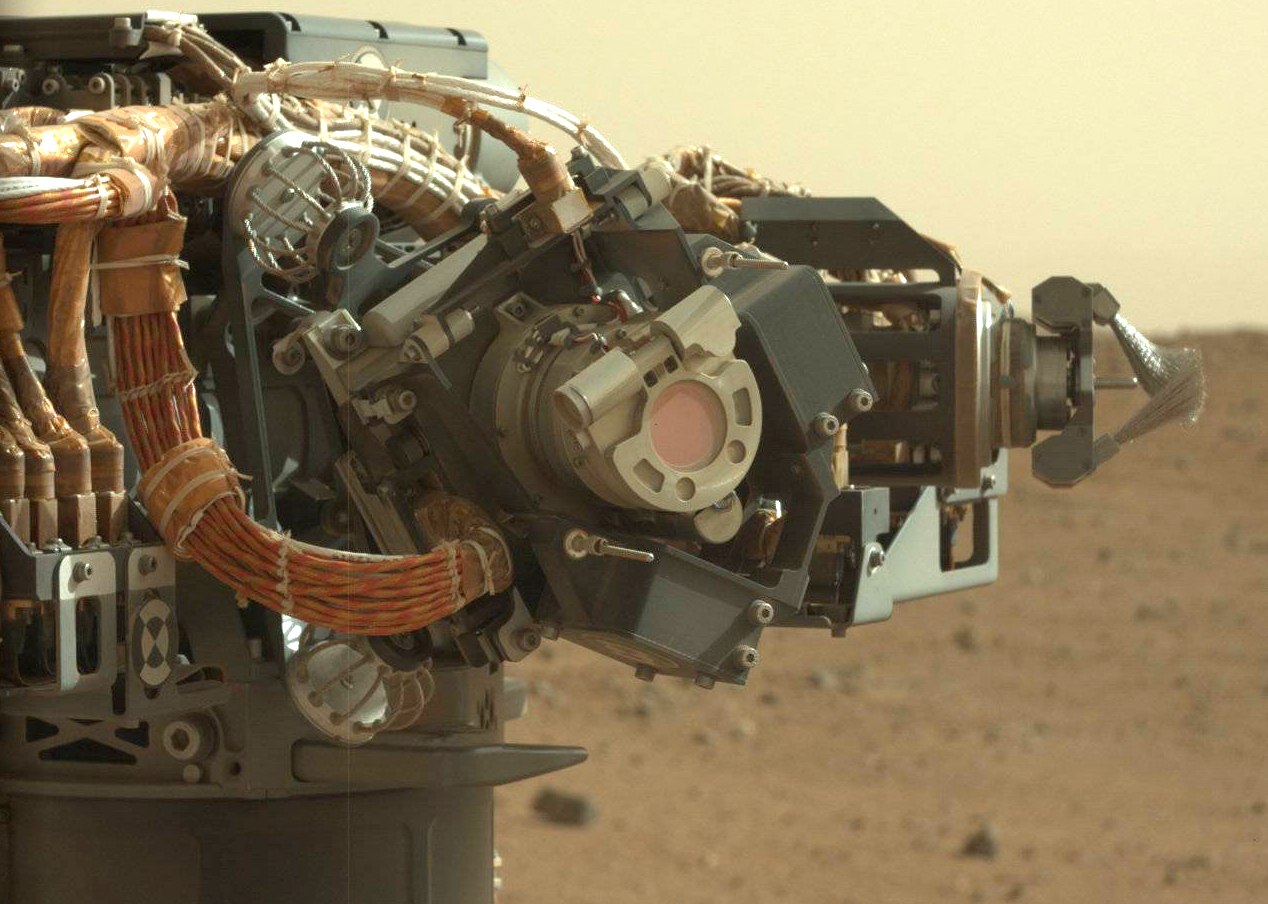
His task is precisely to remove dust from samples, for convenience of studying with cameras and APXS. Previous tests have shown that for Chem Cam dust is not a hindrance - the laser simply evaporates it with its first pulses, and a further series of rays shows the chemical composition of the sample under study.
Having passed some more meters, the mars rover was late at a small sandy spit, marked by wind behind group of stones.
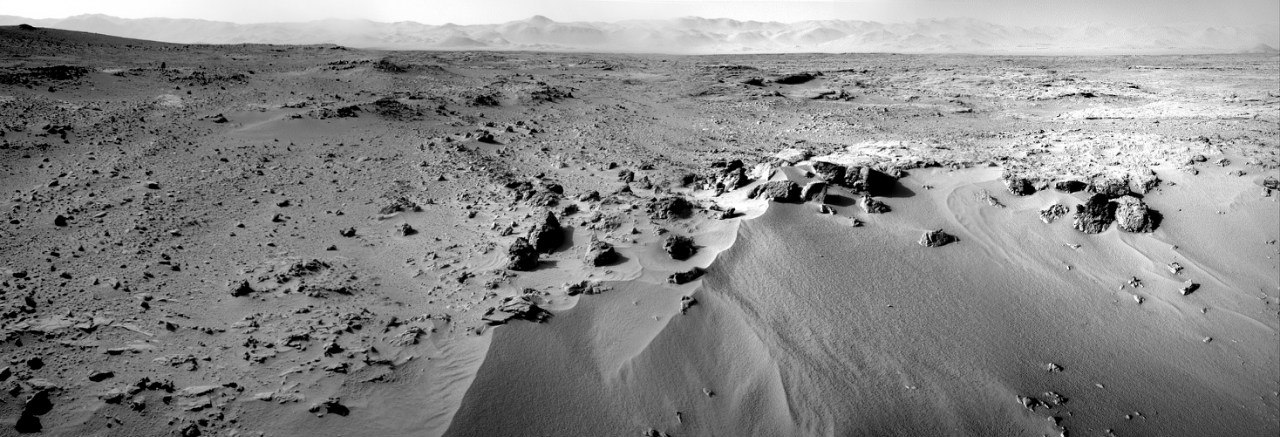
Here the sand was photographed close up.

Shot by laser

Made a test "foot"

Again, the result is photographed

(just don’t ask why sand sticks together if there is -75 C and it cannot be wet. You don’t want to explain the cement and flour)
Finally, the rover decided to move to a new level of relations with this sand and with Mars - he scooped up the first handful of sand to put it in his laboratory inside.
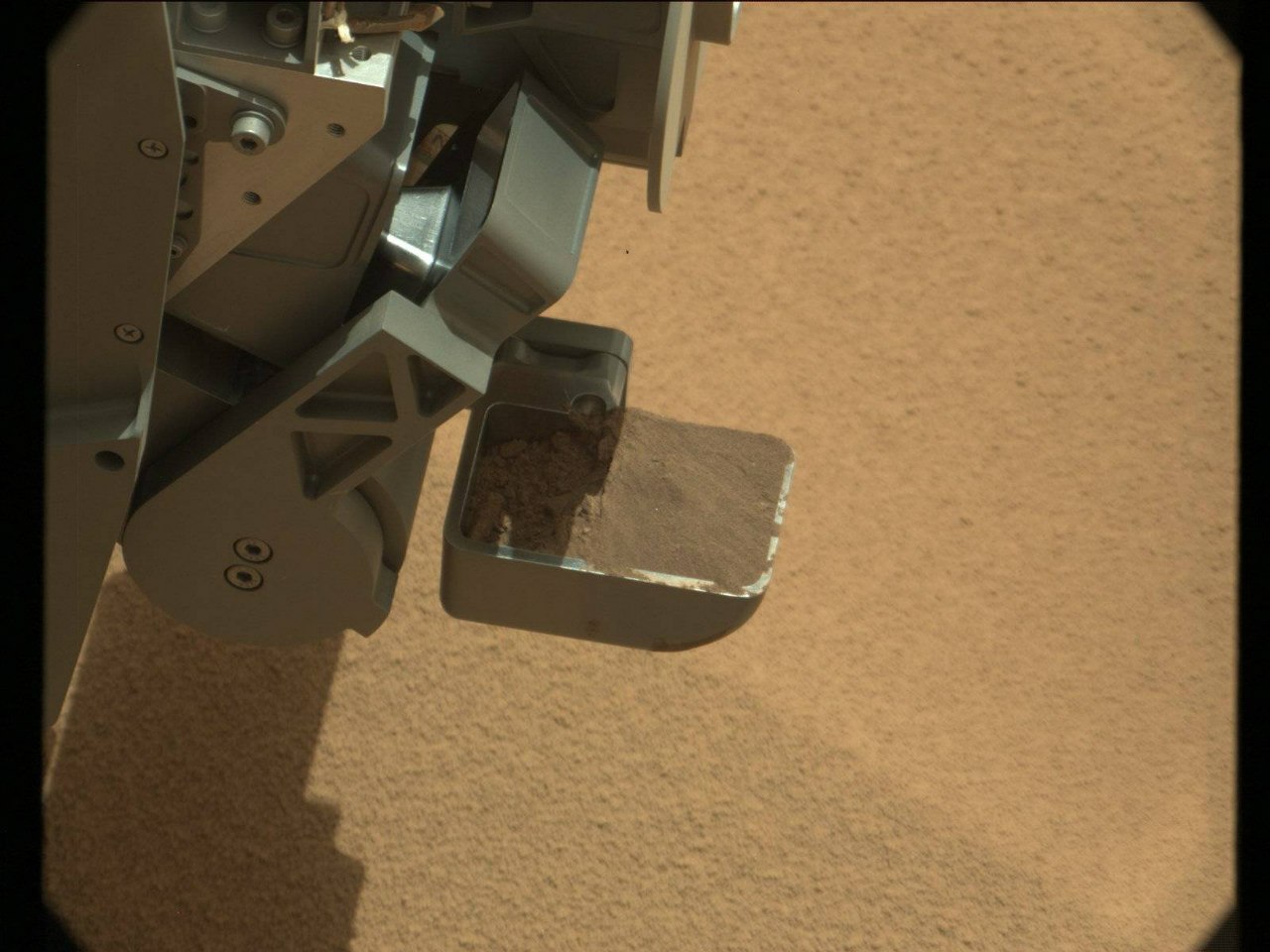
While this text was being prepared, it became known that the sand for its intended purpose did not go. After testing the CHIMRA device vibrator, a small object was found near the rover, which most likely fell off of it. Therefore, all further research work is suspended until NASA assesses the degree of loss. ( More on this )
In order to determine the functionality of the Chem Cam, the first Martian target named “Stone No. 165” was chosen.

Then it was renamed Coronation and the results of the study were published under this name.

Without moving, Curiosity tested the Russian DAN device, assessing the hydrogen content in the soil beneath.

')
Then checked the climatic sensors REMS

Chem Cam fired a series of shots at a section of ground that was exposed from the impact of the jet stream of the Sky Crane landing. As it became known later, this place was named Goulburn.

But the results of its NASA did not bother to tell.
After the first demonstration studies, MSL operators no longer indulge Internet users with detailed gifts. Even when another device was tested - the APXS scientists limited themselves to commenting that during the test “very precise peaks were obtained, as in tests under ideal conditions”.
Therefore, it remained only to follow the photo shoots regularly sent from Mars, and to assume that this time NASA was interested in a particular sample, to which Curiosity paid increased attention.
Thus, it was observed that the rover was eyeing a crack in the ground.

Later it became known that this place was called Link. It has become one of the three locations of rounded pebbles, and evidence of the activity of water on the surface of Mars.

The Hottah site also seemed interesting not only to NASA, but also to simple Internet users. True to people far from science, and with a good imagination, this place seemed to be evidence of the existence of graboids on Mars — underground monsters from the series “The Trembling of the Earth”.

Indeed, it seems as though something jumped out of the ground, and did not fall into it from the sky. Then NASA still explained that this is a trail of a meteorite fall.
The sites of Goulburn, Link and Hottah were later made public as evidence of a previously existing creek that rolled pebbles in a way that no other process known to science could have done.

True, no trace of the channel of the stream itself was visible either from the surface or from space, therefore NASA did not rule out the possibility that all these pebbles were brought from somewhere by mountains by a mud flow

But all the media ignored such subtleties, having pleased the world with headlines: “ Curiosity found a stream ”
The following find has excited many.

The first shots transmitted by Curiosity showed a pyramidal stone. Surprise caused and unusually straight lines of its faces, and the right angle observed at the base, and the observation that the stone simply lies on the ground, as if it was specially placed in the path of the rover. Particularly impressionable immediately spotted on its faces hieroglyphs and hollowed out "eyes".

Contrary to the stereotype "NASA hides", experts have detained the rover at the stone for three days. During this time, Mast Cam cameras filmed it in great detail.

And for the first time the camera on the MAHLI manipulator was tested in practical work.


The chemical composition of the stone, named in memory of one of NASA engineers Jake Matijevic, was investigated using a Chem Cam laser and irradiated with alpha rays from an APXS instrument (Alpha-Particle X-ray Spectrometer). Due to the double research, it was possible to assess the quality of the analysis of each of the instruments, but NASA modestly kept the results with them.
But even the photos destroyed any hopes for the man-made stone shape,

A published map of the Curiosity route showed that the rover was deliberately moving towards it for two days from 41 to 43 salt, which explains the “unexpectedness” of the appearance of a stone right on the way.

Finally, after delays and more than four hundred meters traveled, the rover approached the previously announced goal - the Glenelg point.
Here he made a detailed panorama of the area

The full panorama format is here.
and his attention was attracted by a noticeable outcrop of stones

Of these, one target was chosen, called Bathurst Inlet (with the exception of nominal names like Bradbury Landing and Jake Matijevic, NASA borrows names from Canadian toponymy).

She was also closely examined by the MAHLI camera,

The bare side of the stone suggests that Curiosity used a DRT device, which consists of two brushes on the rotor.

His task is precisely to remove dust from samples, for convenience of studying with cameras and APXS. Previous tests have shown that for Chem Cam dust is not a hindrance - the laser simply evaporates it with its first pulses, and a further series of rays shows the chemical composition of the sample under study.
Having passed some more meters, the mars rover was late at a small sandy spit, marked by wind behind group of stones.

Here the sand was photographed close up.

Shot by laser

Made a test "foot"

Again, the result is photographed

(just don’t ask why sand sticks together if there is -75 C and it cannot be wet. You don’t want to explain the cement and flour)
Finally, the rover decided to move to a new level of relations with this sand and with Mars - he scooped up the first handful of sand to put it in his laboratory inside.

While this text was being prepared, it became known that the sand for its intended purpose did not go. After testing the CHIMRA device vibrator, a small object was found near the rover, which most likely fell off of it. Therefore, all further research work is suspended until NASA assesses the degree of loss. ( More on this )
Source: https://habr.com/ru/post/154125/
All Articles